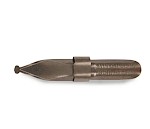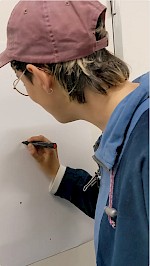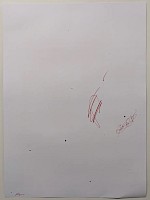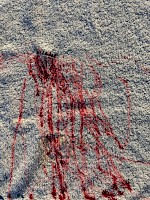Placing the dot NOT where you intend it ...
16 April 2025 — ongoing
At Design Academy Eindhoven —in 1990 still called the Academy for Industrial Design—, one of the most notorious first- and second-year tutors was Harr Scheffer. His course was titled Optical Grammatical Studies (Optisch Grammaticale Studies in Dutch). It involved, for the full first semester of year one, a single A2 sheet of 240-gram paper (Scheffer carton from the Academy shop) portrait on a painters easel, a dip pen with a rounded nib (~4 mm), and a jar of black Indian ink.
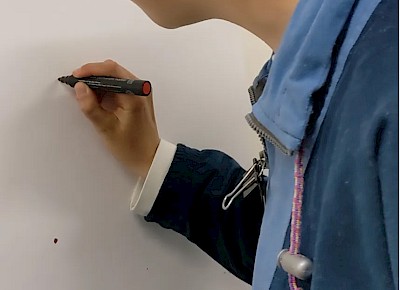
Introduction
The assignment: “Put dots on the paper.”
Four hours per week, for eight consecutive weeks. I remember Mr. Scheffer standing behind me, pausing, and saying: “Mr. Kolman, how dare you. Imagine you end up in an accident and your designs spill all over the road … for everyone to see …” Like me, most of my fellow students were terrified of Scheffer. He was blunt, sometimes aggressive, and often gave little to no context for his cryptic assignments. We were left to struggle, to discover the meaning behind the method. His pedagogical strategy was almost entirely implicit.
It took me months to grasp the depth of what was being taught — and now, I can’t forget.
A single black dot on a white sheet of paper is an affirmative act. It is a decision. Every new dot reconfigures the whole — it alters the field of meaning. The space around the dot — empty, charged, anticipatory — becomes legible. The act of placing a dot is existential. It requires courage, presence and intent.
Scheffer wasn’t teaching us to make compositions. He was teaching us to see. To take responsibility. To understand that every design act — however small — is a claim made in space and time. And that claim is never neutral.
Un-Scheffering
So for this experiment, I wanted to test what happens when we try to remove intent. To deliberately unhook the design act from authorship, from the conscious decision of where to place the mark. The setup echoed Scheffer’s: an A2 sheet of paper, portrait-oriented, pinned to the wall. But this time, I invited three participants — Raisa, Sandra, and Stella — and handed them a red, round-tip permanent marker.
My instruction was deceptively simple?: “Trouble the position of the intended mark. Undo your decision. Place the mark only after that undoing." In other words: suspend the first impulse, question it, move away from it — and place the dot there. I was asking them to design without aiming. To commit without certainty.
But it didn’t quite work out. Of course — my fault.
° There was too much laughter, not enough focus. I hadn’t set the atmosphere.
° My instructions were unclear — they weren’t understood as a prompt for inner hesitation.
° And so, the “undone mark” collapsed into a whatever mark. Not a reflective shift, but an arbitrary gesture.
The act lacked the necessary tension — no dwelling, no delay, no weight.
Still, this failure is meaningful. It taught me something. Undoing isn’t the opposite of doing — it’s a different mode of attention. It needs a held space, time, and attunement. It’s a fragile gesture. To genuinely unmake a decision requires more than contradiction — it asks for a suspension, a letting go, but not a giving up.
Next time / iterate
° Fewer people (why not a single person?)
° Fewer laughs
° Clearer terms
° Better instructions … something like:
"You’re holding a marker. You will place a mark on this sheet. But before you do:
Let the impulse come — but don’t follow it; resist, trouble it … Notice where your hand wants to go … undo that.
Move away from that certainty. Linger in the space of doubt. And only when you feel that hesitation — when the mark feels unsure, unresolved — place it there."
Or just: put a marker without intent … think hard about no intent.
??

